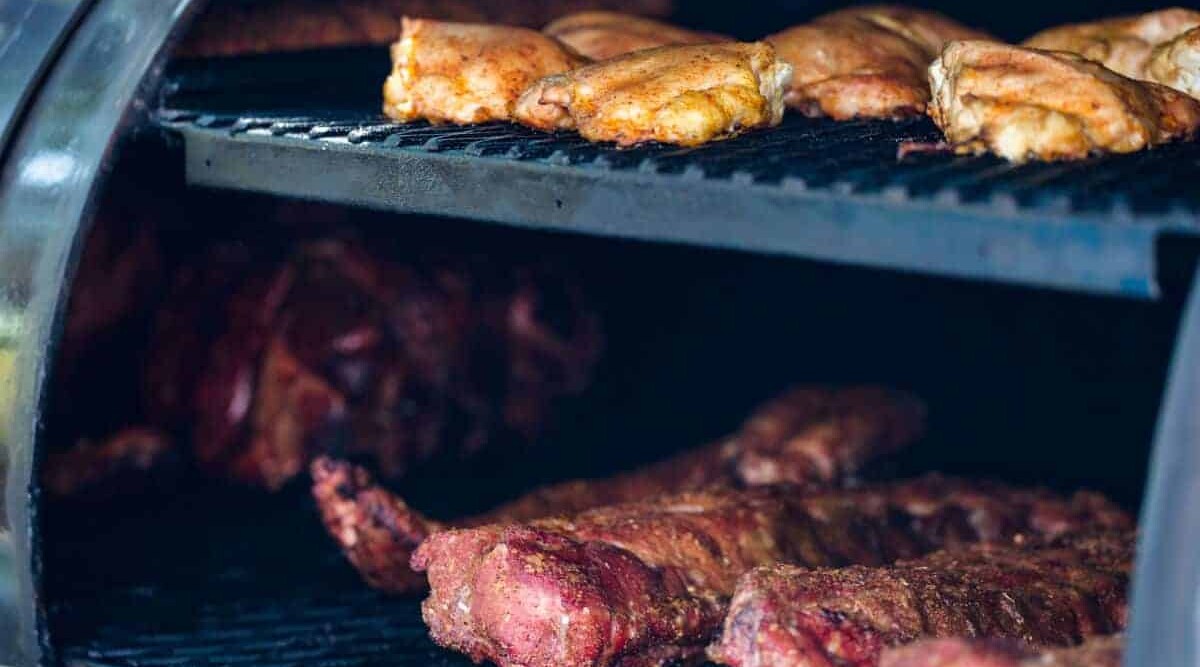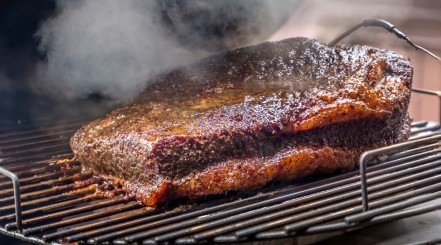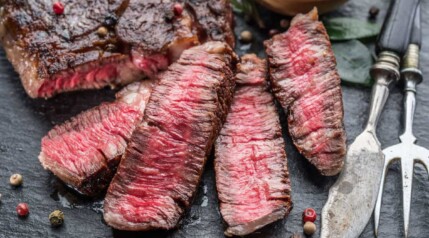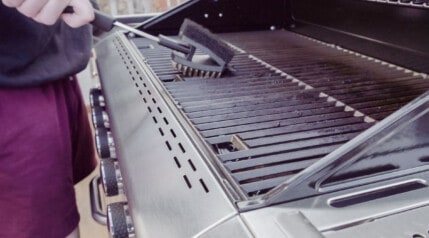
This article covers the known Traeger error codes and how to fix them. We explain the problems, how to troubleshoot them, and hopefully how to prevent them in the future. We also discuss common issues with Traeger grills and their solutions.
So, if you bought a Traeger pellet grill after doing your homework and have so far been enjoying it, but suddenly, a strange message appears on the display, all I can say is: Welcome to error codes. Don’t worry, we’re here to help.
We hope you never face any problems with your Traeger. However, issues can occur with any pellet grill sadly. So read on to learn what to do.
Jump to:
- 1 Quick Look up Table
- 2 Traeger Error Codes in Detail
- 3 Other Common Issues With Traeger Grills and What to do
- 4 Preventative Maintenance Tips
- 5 Troubleshooting FAQ Section
- 5.1 What should I do if my grill won’t turn on?
- 5.2 Why is my grill producing too much smoke?
- 5.3 How can I prevent temperature fluctuations?
- 5.4 What do I do if my grill displays a HEr code but doesn’t seem overheated?
- 5.5 My grill showed an LEr code even though there were pellets in the hopper. What could be the problem?
- 5.6 I keep getting the ERR code. How often do RTD probes need replacing?
- 5.7 After fixing an ER1 code, how can I ensure it doesn’t happen again?
- 5.8 My grill won’t light, and I’ve checked the igniter. What else can I do?
- 5.9 How can I prevent temperature fluctuations during cold weather?
- 5.10 What should I do if my grill’s temperature swings are more extreme than the normal 15-20°F range?
- 6 Update and Firmware Information
- 7 Contact Information for Traeger Support
- 8 Safety Precautions
- 9 Final Thoughts
Quick Look up Table
| Error Code | Issue Description | Fix |
|---|---|---|
| HEr | High Temperature Error: Grill temperature exceeds 550°F for more than 45 seconds. | Turn off the grill, let it cool, clear any pellets from the fire pot, and restart. Check for low-grade pellets, grease build-up, or a faulty temperature probe. |
| LEr | Low Temperature Error: Temperature drops below 125°F for more than 10 minutes. | Restart the grill after clearing the fire pot. Possible causes include running out of pellets, extremely cold weather, blocked fire pot, or a faulty probe. |
| ERR | RTD probe needs replacing. | Check the connection; if loose, secure it. Otherwise, replace the RTD probe. |
| ER1 | Loose connection in the temperature probe. | Check and secure the probe's connection. If the issue persists, contact Traeger for support. |
| ER2 | Short-circuit in the controller. | Likely involves the RTD probe or an internal connection. Consider professional help or contact Traeger support. |
Traeger Error Codes in Detail
While it’s great that your Traeger is self-aware enough to let you know there’s something wrong with it, it’s still not always obvious what the problem is.
As C3P0 once said, “I don’t know where your ship learned to communicate, but it has the most peculiar dialect.”
Allow us to translate:
HEr
Nope, your grill isn’t female. This one stands for “High Temperature Error.”
You’ll see this appear on your Traeger’s display if the temperature inside exceeds 550F for more than 45 seconds. If this happens, your grill will shut off the auger and the fan to start the cool-down process. Once the temperature falls below 450F, the auger will run for 2 minutes to clear any embers from the auger tube.
Power off the grill and let it rest and then clear any pellets from the fire pot. You’ll need to start the grill up yourself once you’re ready to fire it up again. This code is bad news and could signal the demise of your meat unless you act quickly to control the heat or remove the meat from the grill.
Root causes of this kind of temperature surge include low-grade pellets that don’t burn evenly, a build-up of grease, ash, or sawdust that’s burning, or simply a faulty temperature probe giving an incorrect reading.
The worst-case scenario is your temperature controller is malfunctioning. If you’ve eliminated the other possibilities, and you’re still getting this code, it may be time to contact the manufacturer for some help.
LEr
This code indicates a “Low Temperature Error”, the exact opposite problem of HEr. If this code turns up, that’s because the temperature in the grill has dropped below 125F for more than 10 minutes. That’s a heck of a long time, but, relative to a multi-hour smoke, it’s not that big a deal. (You’re unlikely to see this error unless you’re trying to cook low and slow.)
The grill will shut itself down, and then it’s up to you to restart. Clear the pellets from the fire pot and then begin the start-up sequence.
There are several possible reasons you might get an LEr code:
- The simplest explanation is that you’ve run out of pellets, so there’s nothing to burn.
- It may be that the outside temperature is so cold your Traeger can’t get up to temperature.
- There may be debris that’s plugging your fire pot and preventing ventilation (you need oxygen for a fire).
- Maybe you’ve got a bad batch of pellets that’s full of sawdust.
- It could be a faulty probe
- The temperature controller could be on the blink.
If it’s cold outside, try moving your grill somewhere that’s sheltered from the wind, or that’s in full sunshine to try and compensate.
If you use your Traeger in the winter a lot, consider buying an insulation blanket; Traeger has them for many of their more popular models. You might even try pointing a space heater at it. Just don’t bring it indoors, unless suffocating on carbon monoxide sounds like a good time.
The final issue to check is your “p” setting. “P” stands for pause, and it’s the length of time between pellet dumps into the fire pot from the auger. If you have a Traeger that’s a few years old, you can manually adjust this setting to one of three levels. Newer Traegers do not have this feature.
ERR
This is an easy one to diagnose, though it means you’re going to have to replace something. If this code pops up, it means your RTD probe needs replacing. Great — what’s that?
RTD stands for “Resistance Temperature Detector,” and it’s just a fancy way of referring to the sensor probe that measures the ambient temperature inside the grill.
Check the connection first to see if it’s just loose, but be prepared to order a new one.
ER1
Another code involving your temperature probe, this is a simple one. All that’s happened is you’ve got a loose connection. Try pushing the plug in or pulling it out entirely and plugging it back in again.
If that doesn’t do it, something may need tightening, or there’s a defective or broken part inside. Call Traeger and see if they can troubleshoot the problem with you.
ER2
Well, this code sucks. If you see this nasty code, it means something is short-circuiting inside the controller. It could be to do with the RTD probe, or it may be an internal connection. Either way, you’ll want to call for assistance.
There are how-to videos on YouTube showing you how to correct this error, but they all involve taking the controller apart and pulling out the circuit board. You’d want to be pretty confident in your electrical skills before you go this route!
Other Common Issues With Traeger Grills and What to do
Not all Traeger problems are accompanied by an error code. The best Traeger grills incorporate a few, but not all things can be measured and reported.
Here are a few non-display issues you might come up against and our best advice for getting past them.
Unusual Temperature Swings
It is totally normal for the temperature inside your Traeger pellet grill to vary by as much as 15-20F above or below the target you’ve set. That’s all part of the regular cycling on and off of the auger and the rod. When it cools down inside, more pellets feed in and ignite. When it’s too warm, they stop for a bit.
It’s important to remember that a temperature you set, is the target temperature that the grill aims for as an average over the entire time of cook! So 15f to 20f temperature swings are, according to the way it’s designed, perfectly natural.
Any dramatic swings outside that range, however, may indicate a problem somewhere. But what?
First, give some thought whether this might actually be perfectly normal. Remember, the 15-20F variance is an average across the entire cook under ideal conditions. If it’s really cold or really hot outside, your Traeger has to work hard to compensate. In such cases, you might find temperature swings outside that range that are not the fault of the grill itself. Do what you can to protect your grill from the elements to minimize the effects of the weather.
If you’re sure it’s not the weather, a good first place to look is your fire pot. The fire pot was designed for a series of holes for optimal airflow. If new holes appear thanks to our old nemesis corrosion, you’ll get too much air and higher temperatures as a result.
Speaking of corrosion, check the drip pan and the heat diffuser for damage. If there are less of these items than there should be, that could also lead to excess heat inside your Traeger.
Your pellets are possible suspects, too. Low-grade pellets may produce a lot of ash. Not only can ash mess with the ventilation holes but also, if there’s enough of it floating around, it can lead to false readings from the probe.
Try to use only quality pellets, such as those from our guide to the best pellets for pellet grills.
No Pellets in the Fire Pot
The automatic, rotating auger is supposed to pull pellets from the hopper to the fire pot when the controller says they’re needed. It’s an amazing system — unless it’s not working.
The problem could be a purely mechanical one. From time to time, pellets may jam and prevent the auger from turning. To fix this problem, just clear out the auger tunnel. This will require you to disassemble the hopper and the auger, but it’s not really that hard, and you’ll need just a few basic tools.
Don’t worry, though; this isn’t modding or DIY stuff. In fact, here’s an official Traeger video showing you how it’s done:
The other possibility here is the motor is defective or damaged in some way. If there’s no obvious jam, you may need a new motor. Contact Traeger for assistance if you can’t get things working.
Fire Goes Out in the Middle of a Cook
There are several possible reasons for a fire to go out in a Traeger. Once again, we have to check the fire pot to see if the air holes are blocked. Fire needs oxygen to burn, and without those holes, there’s no oxygen. This is another time when the pellets may be the problem. Our recommendation: buy good pellets right out of the gate!
A faulty connection with the probe or a bad reading could be the problem, also. If the controller is getting the wrong information, or none at all, it may not send enough pellets to the fire pot to keep the fire going.
While you’d expect to see an error code, such as LEr, remember if you’ve got your temperature up to, say, 400F, it’ll be awhile before it drops below 125F, even without any fire.
A third possibility is the fan. There’s a little fan in your Traeger that helps push oxygen over the fire pot to stoke the fire. If it’s not running for some reason, this could affect the ability to keep a fire burning. If you can hear the fan humming, you’re all good. If not, it is, yet again, time to call Traeger.
Traeger Grill Not Lighting
The power is on (this should be the first thing you check for any problem!), the auger is turning, the pellets are dropping in the fire pot — but nothing is lighting. Here’s an easy one to solve.
The most likely answer here is the igniter isn’t working. Try running the grill with no pellets, and remove the heat diffuser, the drip pan, and the grates, so you can see right into the fire pot. The tip of the igniter should glow red. If not, there’s your issue. You know what that means — call Traeger!
It’s also possible this is a fan issue. If the fan isn’t working, there may not be enough oxygen in the environment for the pellets to catch. Listen for the hum of the fan motor to determine if it’s working.
Preventative Maintenance Tips
The best cure is prevention. Keeping your Traeger grill in top condition ensures the best grilling experience and minimizes the chances of encountering common issues. Here are some preventative maintenance tips you should follow that should help stave off any problems:
- Regular Cleaning: After each use, clean the grill grates and empty the grease tray to prevent build-up. Monthly, vacuum out the fire pot and inspect the interior for pellet dust or debris.
- Inspect Pellets: Before use, check that your pellets are dry and dust-free. Store pellets in a dry, airtight container to maintain their quality.
- Check the Fire Pot: Regularly inspect it for ash build-up or blockages, ensuring it’s clean to allow proper airflow.
- Grill Cover: Use a grill cover to protect your Traeger from the elements, reducing the risk of rust and weather-related issues.
Troubleshooting FAQ Section
What should I do if my grill won’t turn on?
Check the power source and ensure the grill is properly plugged in. Inspect the fuse, circuit breaker, and the grill’s power cord for any damage.
Why is my grill producing too much smoke?
Excessive smoke can be due to high moisture content in the pellets, excess grease build-up, or setting the temperature too low. Try using fresh pellets and cleaning the grill.
How can I prevent temperature fluctuations?
Ensure the lid is closed during cooking, use high-quality pellets, and avoid grilling in windy or extremely cold conditions without proper insulation.
What do I do if my grill displays a HEr code but doesn’t seem overheated?
Check the internal temperature probe for dirt or damage, as it might be giving false readings. Ensure it’s clean and properly connected. If the problem persists, the temperature probe may need replacement.
My grill showed an LEr code even though there were pellets in the hopper. What could be the problem?
The issue might be with the auger system not feeding pellets into the fire pot. Check for pellet jams or auger blockages. If the auger is clear, the motor might be malfunctioning or require a reset.
I keep getting the ERR code. How often do RTD probes need replacing?
RTD probes can last several years with proper care, but their lifespan depends on usage and maintenance. If you frequently encounter the ERR code and have already checked the connections, it might be time to replace the probe.
After fixing an ER1 code, how can I ensure it doesn’t happen again?
Regularly check and secure all electrical connections, especially after cleaning or maintenance. Avoid pulling or stressing wires during use or cleaning to prevent loosening.
My grill won’t light, and I’ve checked the igniter. What else can I do?
Beyond the igniter, ensure the fire pot is clean and free of ash or debris that could prevent ignition. Also, check the fan for proper operation, as insufficient airflow can hinder ignition.
How can I prevent temperature fluctuations during cold weather?
Use a Traeger insulation blanket designed for your model to help maintain consistent temperatures. Also, positioning your grill to minimize exposure to wind can reduce temperature swings.
What should I do if my grill’s temperature swings are more extreme than the normal 15-20°F range?
First, ensure you’re using high-quality pellets and that the grill is clean. If the issue persists, inspect the temperature probe and the pellet feed system for any malfunctions. Adjusting the “P” setting, if available on your model, can also help stabilize temperatures.
Update and Firmware Information
Keeping your grill’s firmware up to date is crucial for optimal performance and troubleshooting. To check for and install updates:
- Wi-Fi Enabled Models: Ensure your grill is connected to Wi-Fi. It will automatically check for and install any available firmware updates.
- Manual Update: For models without Wi-Fi, visit the Traeger website for instructions on manually updating your grill’s firmware.
Contact Information for Traeger Support
If your problem goes beyond basic troubleshooting and you cannot fix it yourself, your only remaining course of action is to contact Traeger’s customer support team, who will be ready to assist. You can contact them through:
- Phone: Find the specific number for your region on Traeger’s official website.
- Email: Use the contact form provided on the Traeger website for email support.
- Live Chat: Available on Traeger’s website, live chat offers immediate assistance during business hours.
You can follow this link to find support for the USA: https://support.traeger.com/hc/en-us
I cannot provide phone numbers and links here for all regions because there are simply too many. Google ‘Traeger’, open your region’s official website, and search for contact and/or support links.
Safety Precautions
Safety should always be your top priority when troubleshooting and maintaining your Traeger grill. Follow this advice to make sure you remain safe:
- Power Off: Always turn off and unplug your grill before performing any maintenance or inspections.
- Cool Down: Allow the grill to cool completely before cleaning or inspecting internal components.
- Wear Protective Gear: Use gloves when handling hot components or sharp edges inside the grill.
- Follow Instructions: Adhere to the manufacturer’s guidelines for maintenance and repairs to avoid voiding your warranty or causing damage.
Final Thoughts
Now that we’ve been through all the Traeger error code, four further potential issues, and a few frequently asked troubleshooting questions, hopefully you’ve managed to fix your grill?
Or if you found this page during your research stage and were looking to buy a grill, you might be concerned that Traeger pellet grills are doomed to failure?
We assure you this is not the case!
You may own your grill for years and never have a single problem. Maybe you’ll experience a couple of the minor issues on rare occasions. Traeger grills are excellent products, but even the best-built gear can suffer from defects or be at the mercy of uncontrollable outside influences.
Now that you know what the most common issues are and how to deal with them, you can go back to loving your grill. Keep calm and Traeger on!
Thanks for picking us to help you troubleshoot your Traeger pellet grill. If you have any questions, please do drop them in the comment section below.
Happy grilling!






My Texan pellet grill doesn’t display the temperature. It just flashes O (zero). What could be wrong?
My grill just stopped working in the middle of smoking a brisket. Fan works, auger works. But it’s not burning.